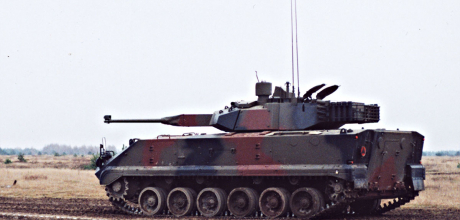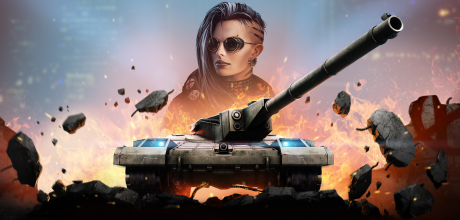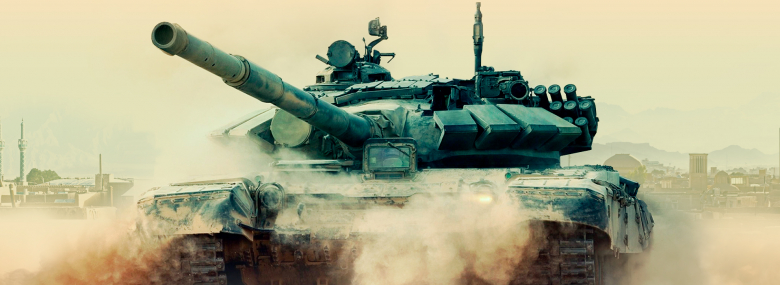
Commanders!
If we were to make a list of the most iconic and easy-to-recognize post-war armored vehicles, the M50 Ontos would, without any doubt, rank very high. Its distinctive, brutal appearance with six massive recoilless guns protruding from its stocky hull makes it one of the most community-requested vehicles to date and today, we’re happy to announce that the it will, indeed, be appearing in Armored Warfare in the near future. For now, let’s take a closer look at what it will be like.

M50 Ontos
But first, a little history – we won’t go into fine details because it is sufficiently covered by many resources that are available for free on the internet. Despite being mostly associated with the Vietnam War, the Ontos (which means “a thing” in Greek) is actually quite a bit older.
The original Ontos was developed as an alternative to the M56 Scorpion airborne self-propelled gun. In the late 1940s and the early 1950s, the U.S. military recognized the need for a light, mobile tank killer that would be able to traverse even rough terrain to ambush the enemy as well as to be deployed via parachute drops from a cargo plane, arriving on the ground practically combat-ready.
The ability to engage armored targets in the field was deemed critical for the U.S. Airborne forces in order to fight off inevitable tank counter-attacks – this was a lesson that was paid in blood during the WW2 Normandy landings.
This meant that the vehicle had to be kept very light – and indeed, the Scorpion weighed mere 7 tons, being little more than a basic suspension with a large (at least compared to the hull) 90mm gun on it. What was saved in weight was, however, sacrificed in protection and stability. The gun operators were protected only by a small gun shield with the hull lacking any ballistic protection whatsoever. In other words, the crew was almost completely exposed to enemy fire and anything bigger than a pistol would go through the hull like butter.
Additionally, the light chassis had serious problems coping with the recoil of the gun. Every shot made the entire vehicle jump back like a startled horse and it was clear that a full-power gun – which the 90mm M54 was – was simply too much for both its hull and suspension to handle. The gun itself had enough potential to knock out a T-54 at 1km (penetrating some 200mm of armor, roughly the equivalent of a T-54 frontal protection) but the price was steep indeed.
The Ontos was born of the same mindset but had several key differences, the most notable being the fact that the standard rifled gun was replaced by a set of recoilless ones.
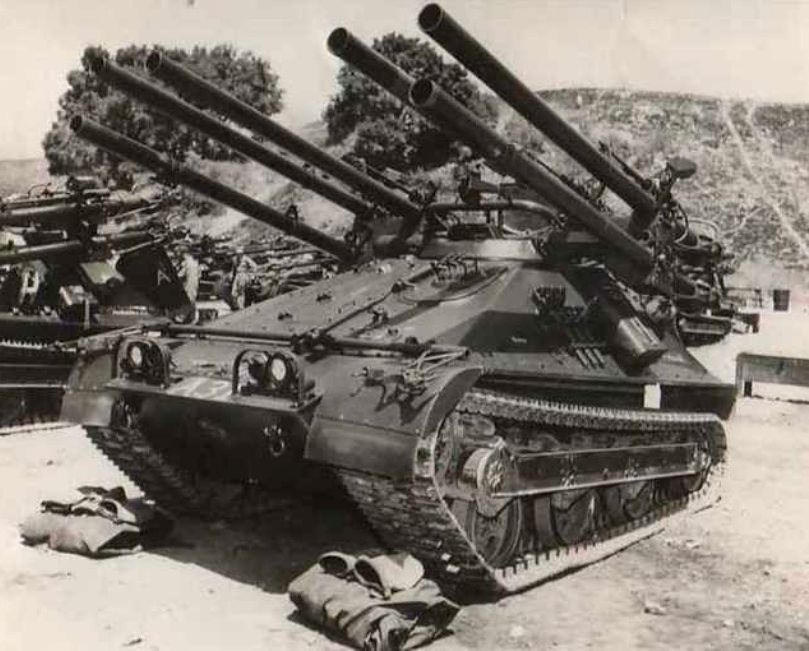
M50 Ontos
Recoilless guns have a number of advantages and drawbacks. As their name suggests, they produce very low recoil when fired, which means that even relatively weak platforms (jeeps, tripods and such) can be used to carry the kind of caliber usually only reserved for tanks and large SPGs. They are also generally very light and portable, making them potent infantry tools to take out enemy armor.
On the downside, these guns dissipate shell energy not by turning it into recoil, but by projecting it outward through their back, which means that whoever stands behind a firing recoilless gun is going to have a pretty bad day. Furthermore, these are low-power guns – imagine them more as “lobbers” instead of actual guns. What this means is that they cannot fire shells that rely on kinetic energy, such as the APFSDS rounds. Recoilless guns typically only fire high-explosive and shape charge shells, making them, much like RPGs, of limited use against vehicles with good anti-HEAT protection.
With the low or no recoil produced by these weapons, you can easily mount more than one on a chassis but the designers of the Ontos really stepped on it and actually used six 105mm M40A1C recoilless rifles at once. Actually, that is a bit of an oversimplification. The development process of the Ontos was in fact a bit more complex with several variants with four guns or even just one gun proposed, but the it was the six gun variant that was actually built.
It’s worth noting that these 105mm recoilless rifles are commonly referred to as 106mm – their actual caliber was 105mm but they were marked as 106mm to make sure the ammunition for them wouldn’t get confused with the other used 105mm caliber shells – the same solution was, for example, used during the Second World War for the M10 Tank Destroyer.
As we mentioned already, the Ontos was originally developed for the U.S. Army in 1952 with the first prototype by Allis-Chalmers being completed the same year. It was essentially a large steel box with frontal sloped armor that was 12.7mm thick all-around. What that meant was that the Ontos could, unlike the Scorpion, withstand rifle fire but it was vulnerable to heavy Soviet machinegun AP bullets and, of course, anything heavier. Protection against HE shell fragments was adequate even though artillery fire could render the Ontos useless as the external-mounted weapons could be heavily damaged. Another thing of note was its poor anti-mine protection – the bottom was less than 5mm thick, which became a serious problem in Vietnam.

M50 Ontos
The vehicle had a crew of three and was powered by an off-the-shelf General Motors SL12340 4.9 liter (or 302 cubic inches, if you are partial to the original designation) 127hp inline 6-cylinder engine – a simple and rugged powerplant that was more than enough to make its 8.6 tons move at 48 km/h, allowing it to keep up with the tanks of the era both on- and off-road. The operational range was some 300km at most with the fuel consumption being roughly between 60 and 210 liters of gasoline per 100km.
The engine got upgraded in the mid-1960s to a Chrysler 5.91 liter (361 cubic inch) V8 that was producing some 145hp (these modified M50s are referred to as M50A1). Some sources claim the output of the original engine was 145hp and the output of the upgraded one was 180hp – this is most likely caused by the use of different methods of measuring horsepower (crankshaft versus wheels etc.)
The most interesting part was, of course, the weapon system – six M40A1C 105mm recoilless rifles that could be electrically fired from inside the vehicle. They, however, had to be reloaded from the outside, making the loader’s job not exactly the safest one in the army. The guns were turret-mounted and could swing around, depress and elevate (-10 to +20 degrees). The aiming system was very basic with each of the recoilless rifles being fitted with a 12.7mm spotting rifle that fired a tracer round with the same ballistic trajectory as the shells of the main weapon. That way, the gunner could physically see where his shells would land.
The guns could be fired a single gun at a time, in pairs, four at once or all six at once (the important part was to have an equal force on each side of the turret). They fired HEAT, HE and canister rounds with the rate of fire being somewhere around four rounds per minute when aiming (it took roughly one minute to reload one gun).
It’s interesting to compare the HEAT rounds of the Ontos and the 90mm full-size rounds of the Scorpion. The Ontos HEAT rounds could penetrate roughly 400mm of steel armor (twice that of the Scorpion kinetic rounds) but were ineffective at longer ranges – even though the Ontos could fire at longer distances by elevating its guns, at roughly 1km, the tracer rounds from the spotting rifles would veer off from the main gun shell trajectory, making it very hard to aim accurately. The Scorpion would be able to hit its target better at longer ranges but it would also lose its T-54 frontal penetration capability. In this sense, both vehicles were handicapped in their intended tank killing role at the distances of 1km or longer but the Ontos was, as a more stable platform, generally performing better at shorter ones.
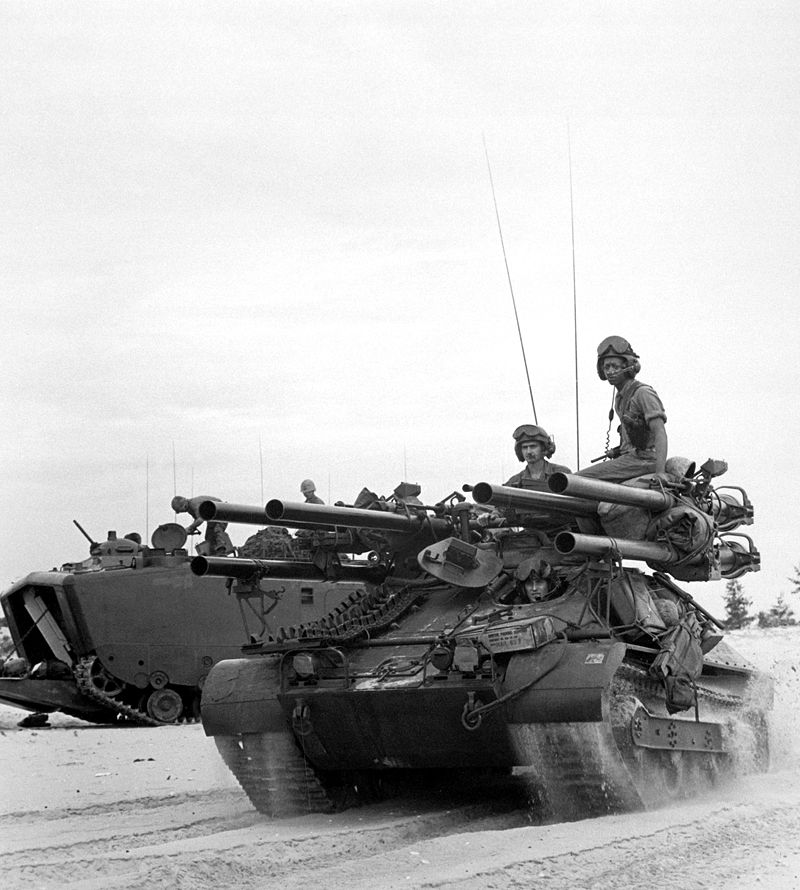
M50 Ontos, Chu Lai beach, 1965
Despite this fact, the U.S. Army went with the Scorpion. The Ontos project was initially rejected but the U.S. Marine Corps stepped in and ordered some 300 vehicles that were delivered between 1956 and 1957. The reasons for this decision were mostly practical – the marines had a long history of ordering different stuff from their army colleagues to get their hands on something new fast. They also favored self-reliance and the Ontos appealed to them – it was a simple machine with its engine parts being readily available and its systems being easy to learn.
The Ontos saw action several times before it was deployed in Vietnam. In one of the weirdest tank actions of post-war history, an Ontos knocked out a Swedish WW2 era Landsverk L-60 tank during the 1965 American intervention in the Dominican Republic. It was the Asian service, however, that made it famous.
With the exception of one or two events, it was never really used as an anti-tank vehicle during the Vietnam War – instead, it was deployed as heavy fire support to various marine infantry units. It excelled in urban combat – a single salvo could level an entire building and the Vietnamese quickly learned to fear it. In other cases, it was essentially used as artillery, firing indirectly at long ranges and bombarding the enemy into submission.
During Operation Jackstay, the Vietcong was attempting to attack river shipping only to run into an Ontos installed on the deck of a LST-class ship, U.S.S. Henry County – the result of the operation was 63 dead Vietnamese. The canister rounds were especially devastating against charging Viet Cong troops with a single Ontos being capable of literally shredding sometimes dozens of enemies at once with one salvo. The HE rounds, on the other hand, turned out to be very effective against improvised entrenched positions in the jungle.
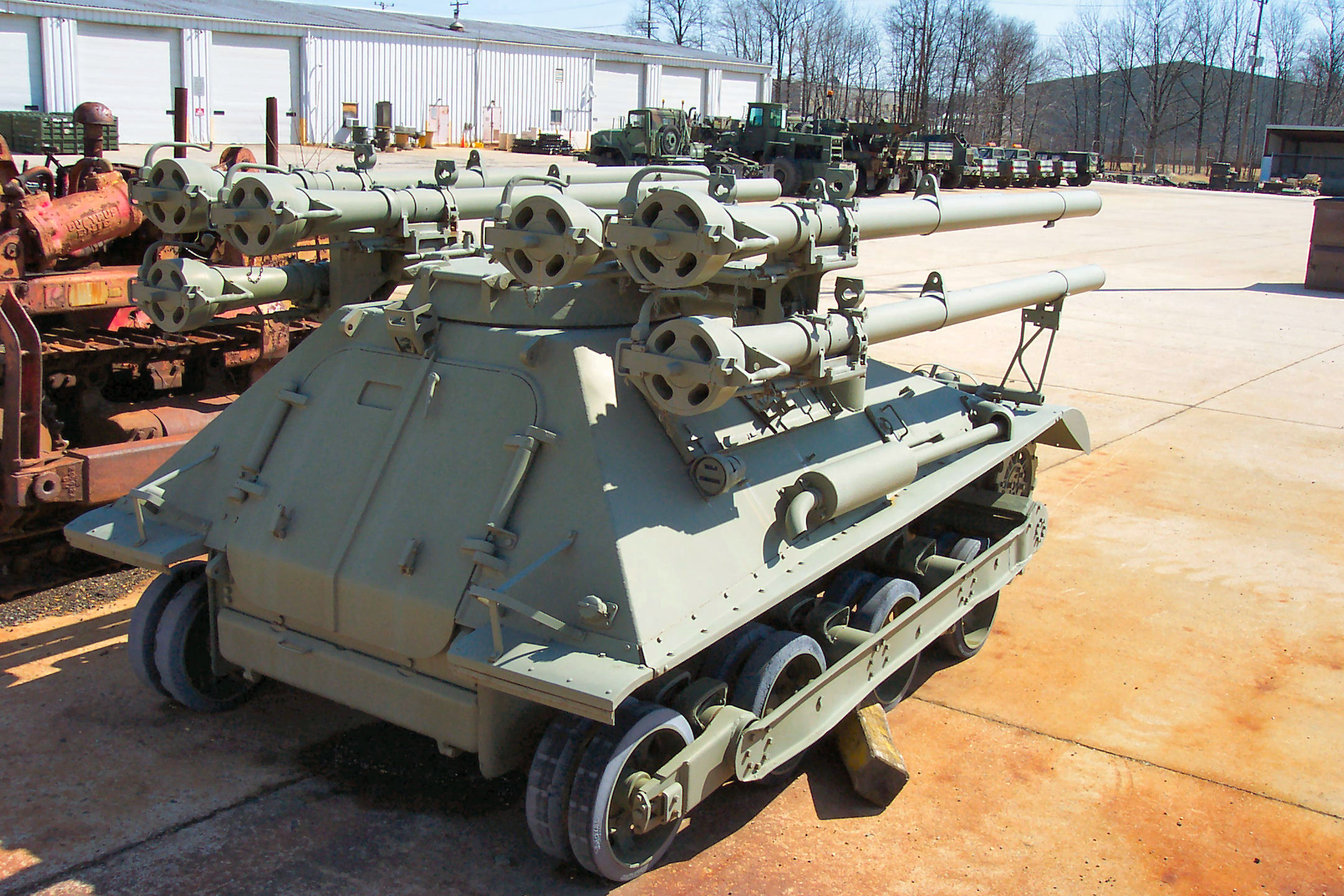
Restored M50, USA, present day
It wasn’t all sunshine and rainbows, of course – the abovementioned vulnerability to mines took its toll on the Ontos vehicles and especially their crews. The chance to survive such a mine detonation was further lowered by the fact that the vehicle was also packed with spare ammunition that would sometimes explode in addition to the mine. Crew casualties were high in general – the vehicle had only very thin armor after all and was not really meant for close range combat even though its firepower turned out to be, especially during the Hue operation, invaluable.
The Ontos would become one of those vehicles that mostly lived and died with one war and the 1968 Battle of Hue, one of the bloodiest battles of the Vietnam War marked its decline. Spare parts were rare even before but, in 1969, the Americans faced a serious shortage and were forced to cannibalize broken M50s with only a limited number of them operational at any given point. Finally, a year later, the U.S. Marines forces in Vietnam that fought so hard in Hue retreated from the country in 1969, leaving some of their gear – including the surviving M50s – to the U.S. Army that remained there until 1973. They were generally worn out and eventually relegated to the role of static turrets.
The U.S.M.C. Ontos units were deactivated in 1969 and their vehicles were, for the most part, stripped of their armament and sold for scrap or to general public as (unarmed) heavy tractors. The last unit to feature an operational Ontos was likely the Guantanamo Bay garrison that had one working vehicle in 1980. Several other variants of the Ontos chassis were also proposed (including an anti-aircraft platform and a howitzer carrier) but none of those progressed beyond the drawing board.
Of the three hundred M50s built, about a dozen or so survived to this day. Most of these were saved by private collectors by restoring the civilian-operated machines to their former combat look. This is quite an achievement considering the limited production run of the Ontos and a testament to its fame that, to this day, goes way beyond its actual combat impact.
Please note that everything below, including the model appearance, is classified as work in progress and may change during the development process.

In Armored Warfare, the M50 Ontos will be a Tier 4 Tank Destroyer that will be obtainable as a part of the upcoming Age of Rage Battle Path campaign. In real life, it served as an infantry fire support vehicle but, in Armored Warfare, it will finally get to fulfill its tank killing potential.
It will be a compact vehicle with incredible burst firepower thanks to its six 105mm recoilless guns that will have two modes of fire:
- Single barrel (1 round per second until all six barrels are depleted)
- Salvo (three barrels of six firing at once, 1 second delay between both shots)
The vehicle will fire 450mm penetration HEAT shells that do 460 points of damage each, which means that, in the burst mode – and assuming that all shells hit and penetrate – the vehicle will be able to deal 2760 damage on average within the space of two seconds.
These firing modes may or may not appear in the game depending on testing and your feedback.
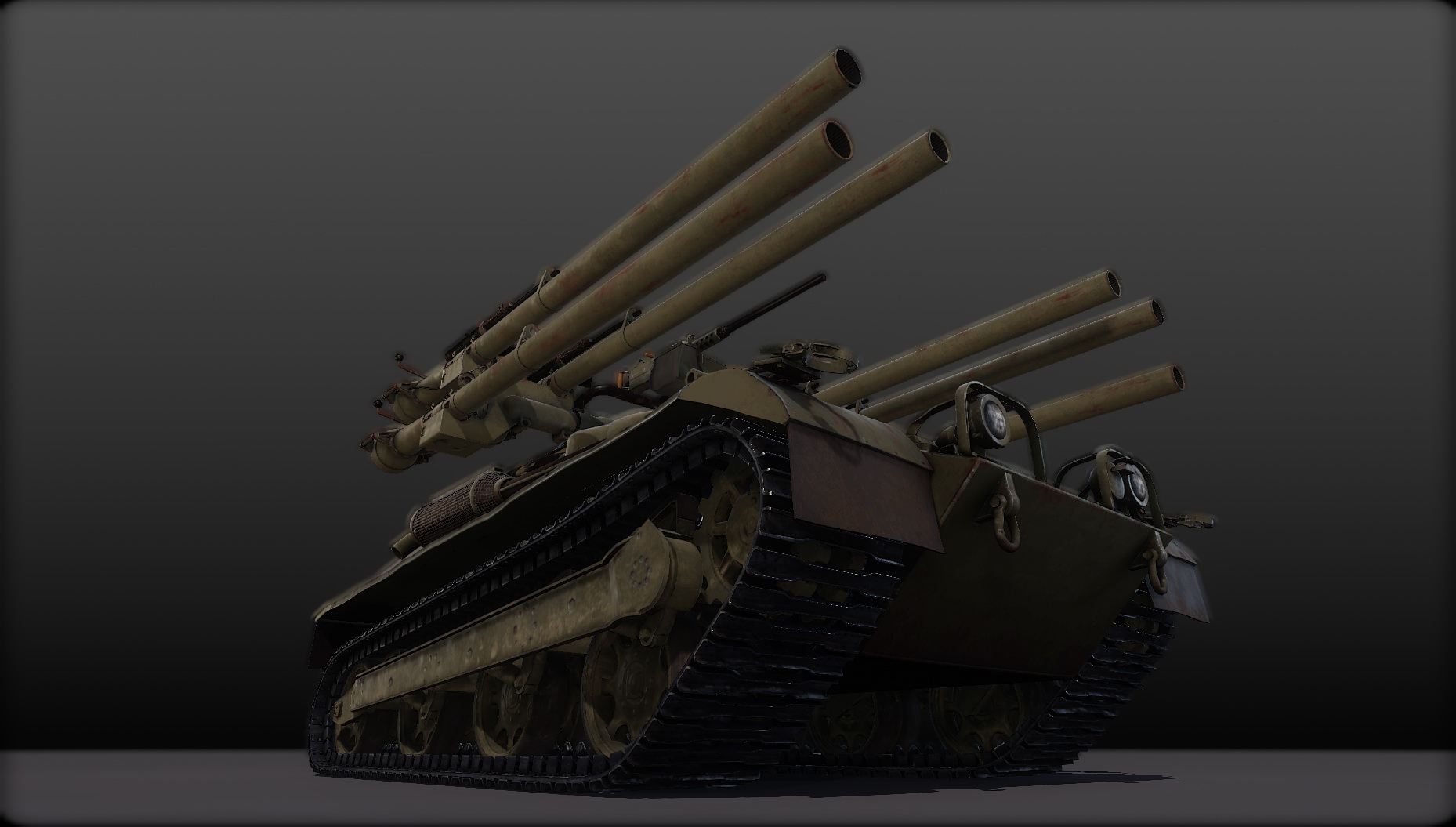
This level of firepower will be, however, compensated by:
- Extremely long reload time (roughly 40 seconds for the full magazine)
- Low accuracy on the move (making firing when standing pretty much a requirement)
- Limited turret traverse (40 degrees to each side)
The mobility and agility of the Ontos will be good due to its very low weight combined with a powerful engine with the maximum speed being some 60 km/h. Its camouflage factor will also be great thanks to its small size, even though firing will come with a hefty camouflage penalty. On the downside, its armor will be pretty much non-existent with the vehicle being vulnerable even to fairly weak autocannons.
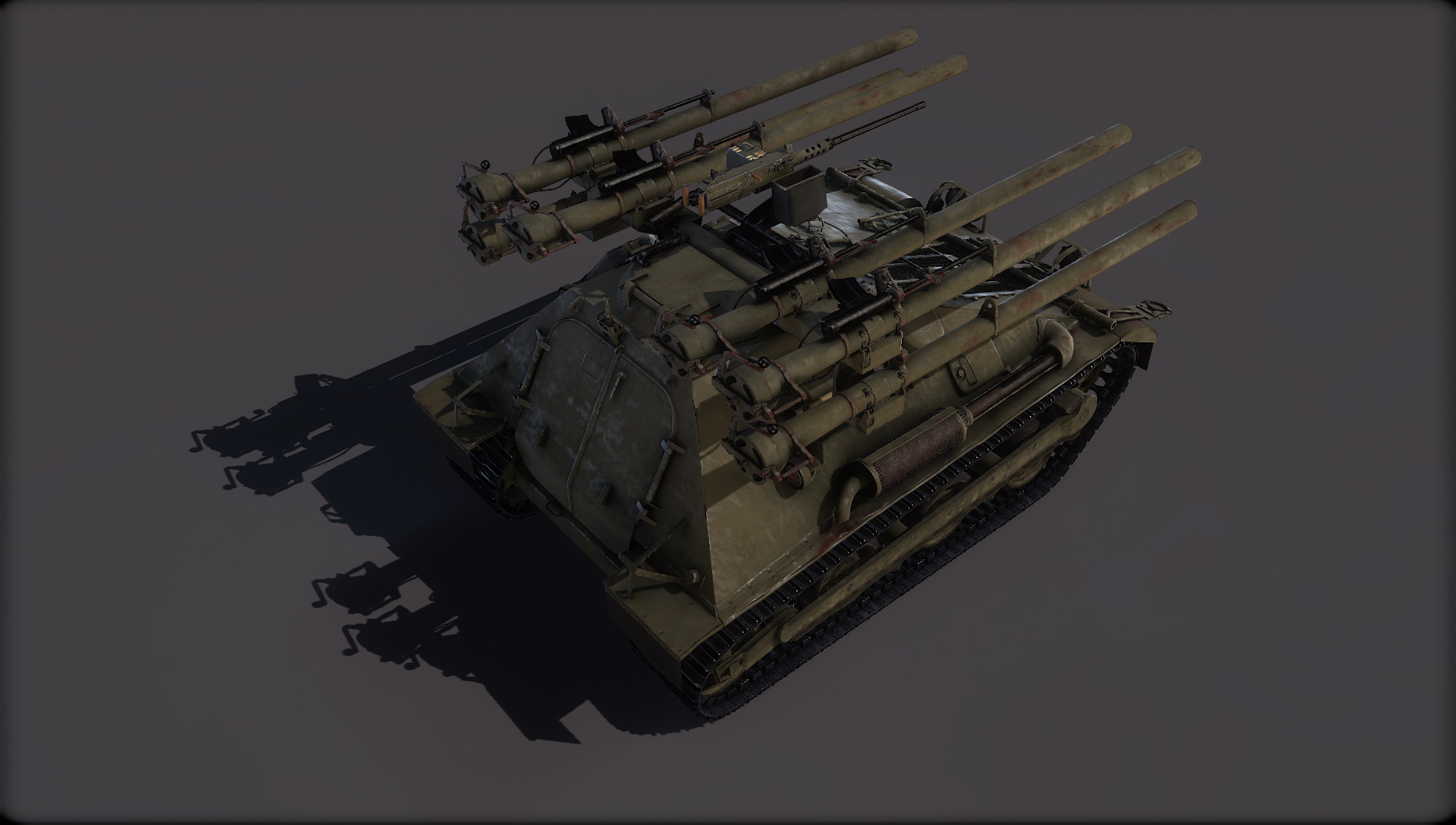
In summation, what we have here is one of the best ambushers in Armored Warfare. The M50 Ontos will be perfect for lying in wait, devastating your enemy with a deadly salvo and then retreating to reload. Instead of running in circles around the enemy, you’ll need to carefully pick your spot, move there and wait for an unsuspecting victim to cross your sights. Your reward will be the burning wrecks of your opponents and the feeling of a job well done.
We do hope you’ll enjoy it and will see you on the battlefield!




